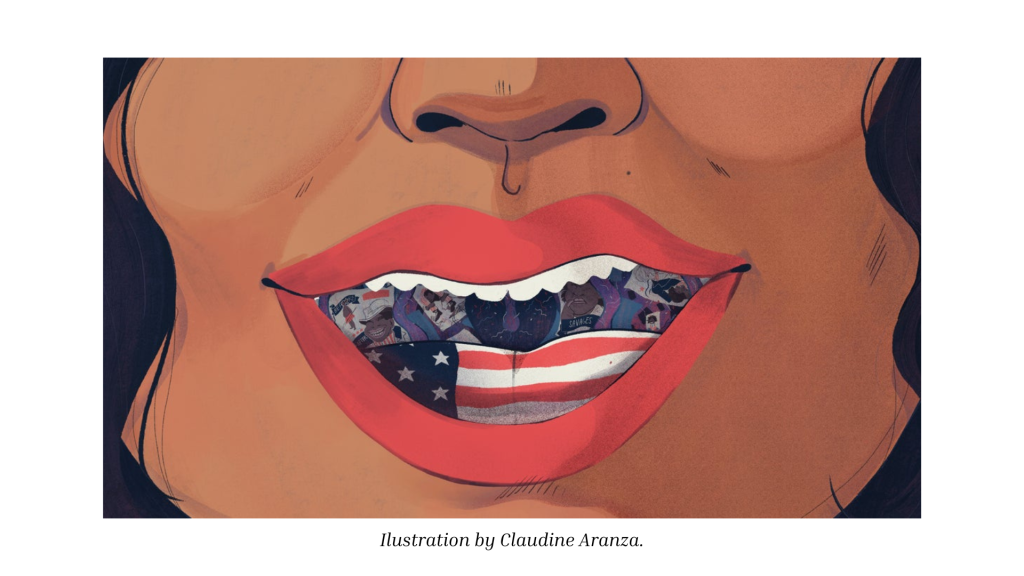With the preceding reputation of the Philippines as a hotspot for social media usage, numerous social media content creators, both local and international, are trying to take advantage of the growing pool of diverse audiences in the country.
“MEET FOREIGNERS WHO CAN SPEAK FILIPINO!”
“What Foreigners REALLY Think of Filipinos”
“Americans Try Filipino Christmas Foods for the FIRST TIME!”
Have you encountered any of the titles above whenever you’re scrolling through any of the social media platforms like Youtube, TikTok, or Facebook? Even if it’s not exactly the same caption or title, yet similar in a way where it always includes a non-Filipino speaker bunched up together with anything “Filipino” related. They may even include the Philippine flag and the featured “Filipino item” as the video subject. If you have scrolled through these, then you might unintentionally have been introduced to the new phenomenon called Pinoy baiting.

In the article, Unpacking Pinoy Baiting: The Negative Impact of Shallow Appreciation of Philippine Culture by Relojo-Howell (2023), “Pinoy baiting” was defined as the phenomenon where non-Filipino celebrities, Youtubers, etc., post different forms of content online that deliberately bait or attract the attention of Filipinos through providing their audience with anything that is related to the Filipino culture—this can be food, a song, a Filipino celebrity, etc. According to Franco (2021), in the article entitled We Need To Talk About Pinoy Baiting, the text referenced M.A Buendia’s definition of “Filipino baiting” where it was stated as a marketing ploy used by creators in general to get the attention of Filipino audience.
Pinoybaiting is a marketing strategy used by creators to attract Filipino [audiences] & fans. Foreign [Youtubers] exagge reaction videos to our singers; series, tv shows and films involving the Philippines in their plotline. It’s effective coz our thirst for global validation is real.
– M.A. Buendia
Let’s discuss who are the foreign content creators who participate in this phenomenon. According to the study conducted by Alcantara & Demeterio (2021), they were able to identify several types of creators who utilize this strategy, and they are typically casual tourists visiting the Philippines, foreigners outside the country, foreigners who are residing temporarily in the Philippines, and sometimes, they may even be half-Filipinos. They are content creators that do not have sufficient knowledge when it comes to the culture and traditions of the Philippines, and they are described as limitedly exposed to the country as a whole.
Why do foreign content creators use this so-called new marketing strategy? In order to fully comprehend the motivations revolving around this issue, we should first look into the background of the Philippines in the social media arena.
The PH in the Social Media Arena

Social media is a versatile tool created for the sole purpose of connecting people. With its main characteristics being accessible and personalized, it’s no wonder that the majority of the population of the world was converted into social media users in this century. Filipinos are not an exception in the elevation of social media in the digital age—in fact, as of today, the Philippines is considered the social media capital of the world, just next to India. In the Digital 2023 Global Overview Report produced by Meltwater and We Are Social, there are currently 84.45 million social media users in the country, which converts to 72.5% of the country’s population staying connected online.
Keeping this in mind, social media or content monetization is an effective process of generating revenue from a creator’s social media audience. This can be any digital content ranging from videos, images, etc. Now, with the preceding reputation of the Philippines as a hotspot for social media usage, numerous social media content creators, both local and international, are trying to take advantage of the growing pool of diverse audiences in the country.

With the noticeable potential of viewers, foreign content creators devised a certain strategy to get Filipinos to talk, watch, and consume their content—it was quite easy; a creator just needed to insert a specific Filipino icon (local food is a guarantee!) then put them all together with the finishing touch of the header; “Foreigners Try Filipino Childhood Snacks!” and the creator is good to go.
From this formula, Pinoy baiting was born.
Overused Characteristics of a Pinoy Baiting Content

Looking into the outside characteristics, aside from an exaggerated video titles that usually do not give any full context of what the video is about, the video thumbnails are usually the main provocative asset for the audience to pick the video. This is why a lot of foreign content creators tend to show all elements that can trigger Filipinos in clicking their channel. First on the list is the Philippine Flag which is usually stamped on the thumbnail. This will be followed by a word or phrase that will pique the curiosity of their watchers, like “shocked” “OMG” “Can’t believe this happened!” as well as a photo or screenshot of the content creator’s bewildered reaction. Most of the time, they also provide an image related to the Filipino culture that they’re attesting to. The typical subject of the videos revolves around artists, films, places, and food. Overall, the main point that these content creators are trying to say to the audience is, “Watch our video to know what WE, foreigners, think about the Filipino culture to fuel your Pinoy Pride!”.
Some content of these videos usually are underwhelming, and this is in contrast to the thumbnail that was presented before a potential watcher click and open up the video. The creators provide a series of trying to hype up their reviews and reactions to justify their first impressions, but ultimately just really demonstrate an overreaction or exaggerated response, making it less sincere and really stretched to accommodate the satisfaction of the audience, which in this case, Filipinos.
Cultural Appropriation & Shallow Recognition of Culture
Although it should be noted that not all foreign content creators have the same agenda—there are others who are truly genuine when it comes to celebrating the culture of the country and introducing them to the whole world to see. However, this does not in any way lessen the fact that there is a phenomenon that commodifies Filipino culture for the creator’s self-fulfillment and gratification.

Another thing to consider is how these videos frame the entirety of Filipino culture—it makes our appreciation for our own culture shallow. Is Jollibee, the popular fast-food chain in the country, really the epitome of our culture? Sure, it is a pop culture icon, but to make the iconic Jollibee a representative of who we are is quite too much. At the same time, it projects to other nationalities that Filipinos are just what they are in the videos these foreign content creators are showing. So the lack of depth in presenting our identity can leave a mark on how the international community makes of us.
The Philippines is not merely a country in Southeast Asia known for Jollibee, Balut, or Adobo. It is a country known for diversity, deep culture, and values. This is not to say that being recognized by something is inherently a bad thing—but it doesn’t help if our culture is portrayed as shallow and is boxed into a single thing and nothing more. We are really just more than a face of a red big bee.

Going back to the topic at hand, despite the obvious and explicit attempt of foreign creators to bait Filipinos, why is it still effective in garnering views? Why are content creators confident in milking Filipino viewers? Is it because they are aware thus, they cater to the stereotypical sense of Pinoy pride? Or is it because, in the perspective of Filipinos, it is a concrete indicator that a person, a non-Filipino, from a different country, took notice of our “culture”—thus, essentially “validating our identity”? It boils down to the question; why do we look for validation so much from people outside of the country?
Inferiority Complex & Cultural Cringe

Cultural cringe is a term that discusses an internalized inferiority complex wherein people of a certain culture have a tendency to see their own as inferior to others. This was coined by Australian literary critic A.A. Philips (1950) in his essay with the same title. Patterning to this phenomenon, Filipinos are dismissive of their own culture until international media recognizes them and translate it to making them feel a sense of short-term, Pinoy pride. But when did our inferiority complex start? It is a consequence of our long history of colonialism; from over three hundred years of Spanish occupation, then the almost fifty years of American occupation, it is no wonder that Filipinos were able to pick up the mentality that our own culture is not good enough. Hence, it makes us excited whenever we are acknowledged by other races.
Why is this such a big issue?
There is certainly nothing wrong with celebrating our identity, especially since our own culture’s foundation is built on hospitality. There’s no denying that we, Filipinos, are very welcoming towards foreigners visiting the country, and it is true that because of this factor, the Philippines is considered an ideal tourist destination spot for others. However, we shouldn’t also be depending on them to the point that we are begging them for validation, as well as seeking their approval regarding what’s ours. When we watch their content, we become ecstatic when they like something Filipino but grow annoyed if they admit that they are not a fan. It makes our Filipino pride a paradox that settles in the hands of another non-Filipino. Who’s to say that we cannot be proud of our own culture even without a single nod from the international community? We, the ever-diverse Filipino community, are the only people who should have the right to determine our place and position on this platform.
Written by Korina Gie O. Dela Cruz
References
Alcantara, G. C. & Demeterio III, F. A. (2021). Bida ang Pinoy?: Isang panimulang pagsasalarawan ng Pinoybaiting sa YouTube. Plaridel, 18(2), 227-258. https://doi.org/10.52518/2021-19alcdem
Barrameda, I. (2018, May 8). How the Philippines’ colonial history lives on in the English language. BuzzFeed. Retrieved April 26, 2023, from https://www.buzzfeed.com/inabarrameda/inglisera-philippines-american-colonialism
Beltran, S. (2022). When misplaced Pinoy Pride leads to Pinoy-baiting: Opinion. Coconuts. Retrieved April 26, 2023, from https://coconuts.co/manila/features/when-misplaced-pinoy-pride-leads-to-pinoy-baiting-opinion/
Cultural cringe. TV Tropes. (n.d.). Retrieved April 26, 2023, from https://tvtropes.org/pmwiki/pmwiki.php/Main/CulturalCringe
Decena, Ashley M., “Identity, colonial mentality, and decolonizing the mind : exploring narratives and examining mental health implications for Filipino Americans” (2014). Masters Thesis, Smith College, Northampton, MA. https://scholarworks.smith.edu/theses/769
Howe, S. (2023, April 4). Social Media Statistics in the Philippines [updated 2023]. Meltwater. Retrieved April 26, 2023, from https://www.meltwater.com/en/blog/social-media-statistics-philippines
Obice, J. C. (2021, August 9). Pinoy baiting: What is pinoybaiting and why is it a problem? 8List.ph. Retrieved April 26, 2023, from https://www.8list.ph/pinoy-baiting/#read-more
Pieraz, A., Wonder.ph, Santiago, S., & Aquino, E. (2021, September 8). We need to talk about Pinoy baiting: Wonder. Wonder Mag PH. Retrieved April 26, 2023, from https://wonder.ph/popculture/pinoy-baiting/
Psychreg. (2023, March 29). Unpacking pinoy baiting: The negative impact of shallow appreciation of Philippine culture. Psychreg. Retrieved April 26, 2023, from https://www.psychreg.org/unpacking-pinoy-baiting-negative-impact-shallow-appreciation-philippine-culture/#:~:text=The%20phenomenon%20of%20Pinoy%20baiting,gaining%20the%20attention%20of%20Filipinos.
Team, D. (2022, October 24). Social Media Monetization: Everything you need to know. Disciple. Retrieved April 26, 2023, from https://www.disciplemedia.com/community-monetizations/social-media-monetization/
What is content monetization? (definition). Mighty Networks. (n.d.). Retrieved April 26, 2023, from https://www.mightynetworks.com/encyclopedia/content-monetization

Leave a comment